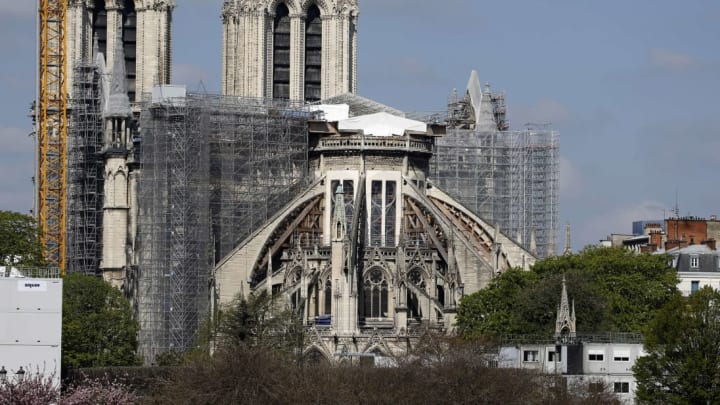On April 15, 2019, Michel Picaud watched with the rest of the world as the Notre-Dame Cathedral in Paris burned. Many horrified spectators felt a connection to the French icon, whether they had seen it in person or only knew it from film and literature. For Picaud, seeing the building in flames carried an additional layer of grief. He was—and still is—the president of Friends of Notre-Dame de Paris, an organization founded in 2016 to conserve the nearly 900-year-old landmark. As the fire blazed, it was unclear if there would be anything left to save at the end of the day.
It’s hard to reconcile Notre-Dame today with images of the church that caught fire two years ago. The structure is still standing, and in just a few years, it will hopefully be ready to welcome visitors again. This is due in large part to the restoration efforts of Friends of Notre-Dame de Paris.

Following that tragic day in the spring of 2019, the nonprofit was saddled with a massive task. “We had a little bit less than 1000 donors in the U.S., and we had collected something like $2 million,” Picaud tells Mental Floss regarding the state of the charity before the fire. “Then suddenly we had this terrible fire happening on April 15, 2019, and we had to completely change our plans because it was a large step backwards for us. Not only did we have to renovate the cathedral, but immediately we had to reconstruct the building completely.”
Fortunately, they had support. The incident triggered an influx of donors, 95 percent of whom were from the U.S. The Friends of Notre-Dame de Paris received $6 million in donations following the fire, and that money was put to good use. Though the fire—which was likely caused by an electrical problem—left the cathedral’s stone facade and much of the interior intact, it had destroyed the wooden roof along with its iconic spire. It also left the building unstable.
"The biggest challenge immediately after the fire was to secure the cathedral and avoid any additional damages happening,” Picaud says. “For instance, the north wall of the transept was beginning to tilt a little bit, so immediately after the fire we had to install trestles to avoid this falling. This would have been very damaging.” The possibility of a collapse threatened the church’s three stained-glass Rose Windows, which had been miraculously spared by the fire. By building supports to reinforce the church's weakened structure, engineers were able to save the windows from devastation.

Ironically, another danger to the building came from the Friends of Notre-Dame de Paris’s initial restoration efforts. When the structure caught fire, the roof was covered in scaffolding from the first phase of the restoration project. The burnt, mangled scaffolding left behind by the blaze was heavy and unstable, and removing it from Notre-Dame was a priority. Over the past two years, the team has also worked on fortifying the building's structural elements, wrapping the grotesques and gargoyles outside in protective material, and relocating artifacts like artwork and an 8000-pipe organ.
An incredible effort has been made to save the world’s most famous church, but the work is far from over. For this next phase of the process, Friends of Notre-Dame de Paris will focus on rebuilding the destroyed elements—including the spire—as well as strengthening what’s already there against future damage. To garner support for the project, the charity has launched a new online tool for donors. At restorenotredame.org, you can browse an interactive “puzzle” of Notre-Dame’s artifacts and donate money to restore individual items. Donors are also welcome to give to the general restoration project. “If you go to the website—if you contribute, that’s even better—but you also get a description of each of the artworks. So you can learn a lot about Notre-Dame and you can play a little bit.”
Though it will likely take longer to be fully restored, Notre-Dame is set to open its doors to the public sometime in 2024. Until then, Paris's residents and tourists can still visit the city’s 4th arrondissement to observe the cathedral where it has stood for centuries.

